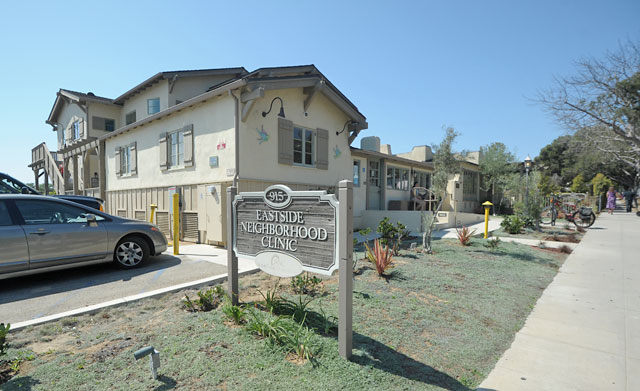Neighborhood Clinics Stabilized
Debt Reduced Significantly

Six months ago, Santa Barbara’s Neighborhood Clinics were in such dire financial straits that board president Mark Palmer held a press conference to announce they’d be shutting their doors unless they got a massive infusion of cash. Thursday afternoon, Palmer held a much calmer press conference to announce that while the clinics — which treat about 17,000 of the poorest and most underserved residents on the South Coast — may not be entirely out of the woods, the wolf is no longer at the door. Today, the clinics have cut annualized operating costs to the tune of $1.2 million. The clinics are still running in the negative — losing about $100,000 a month — but that’s far better than the $250,000 a month they had been losing, Palmer said.
Palmer credited $150,000 in individual donations the clinics received and a $600,000 package put together by Ron Gallo and the Santa Barbara Foundation. Particularly helpful, Palmer said, was a grant from Cottage Hospital to pay for a consultant specializing in helping troubled medical operations. That consultant helped prepare a detailed blueprint for economic recovery. Palmer also announced that the interim CEO the clinics hired — Trula Breuninger — has just been been hired permanently.
In the meantime, the clinics have cut costs and increased efficiencies by consolidating offices, laying off nine employees, and getting patients seen by medical professionals with less wasted time. This October, the medical clinics saw the second highest number of patients in its history. The dental clinic on Milpas Street also experienced a marked increase in traffic, accomplished by converting administrative office space into a dental theater.
One of the main problems confronting the clinics is that one-third of their patients have no money or insurance and that the federal compensation for such visits is — and has been — quite low. Palmer and Breuninger are currently working on plans to get that rate of compensation increased by $10 per visit. That process is quite daunting and byzantine and the outcome is by no means assured. Earlier, there was much discussion about whether the Neighborhood Clinics might merge with the American Indian Health center, which enjoys a significantly higher re-reimbursement rate for the same procedures than the clinics. But Palmer said, after closer examination, both entities agreed it made more sense for them to remain as they are.
Two weeks ago, the federal government awarded the Neighborhood Clinics an $800,000 grant to open a new clinic in Goleta with $600,000 in annual funds to pay for operations. The fate of the Neighborhood Clinics’ Isla Vista offices, however, remains very much up in the air. Those offices were located on real estate owned by a redevelopment district, and the state government abolished all redevelopment agencies. As a result, the state is pushing that this property be sold off. If that were to happen, the Isla Vista offices would be forced to find other accommodations. Currently, the county supervisors are fighting this liquidation.
Financial problems at the Neighborhood Clinics had been festering for years, but came to a head just as the constellation of South Coast health-care bureaucracies was about to be rocked by the onset of Obamacare. The good news is that Obamacare offers the possibility of new income streams, if the clinics could just hold on. But for other health-care providers — struggling to find enough primary care doctors to handle the spike in patients — the Neighborhood Clinics’ financial SOS was especially alarming. If the Neighborhood Clinics went under, local emergency rooms would have felt the impact.
Palmer took pains to praise his staff for holding tight and weathering the financial crisis. “Nobody went running for the doors,” he said. “It was all about rolling up their sleeves.”


